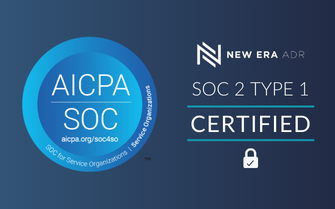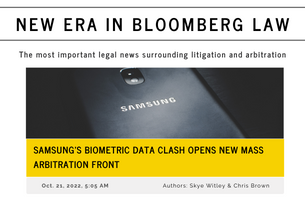
When a global pandemic caused courts to close, savvy legal professionals knew to explore other options.
“As a lawyer who’s been practicing for almost 18 years, sometimes it seems intuitive to me that everyone would know courts are not the only options for lawsuits. But when I think more carefully, and remove all the legal education and experience ingrained in my head, I actually realize that most people simply associate lawsuits with court, and not any other forum. It’s not surprising and certainly isn’t deterred by the abundance of legal shows on TV that show lawyers in court every day. Regardless, here is the little known secret of the legal profession, there are a lot of ways to resolve or litigate a lawsuit without ever entering a courtroom.” – Collin Willams, Founder, New Era ADR
Cases that made headlines years ago are only now going to trial. Adding to an already strained system, a significant backlog of cases piled up during the pandemic. While it is an understandable outcome of a global crisis, there are ways to relieve pressure on the system. Since lockdowns were introduced, innovation and adoption of alternative processes soared. The way people shopped, ate, worked and celebrated all changed drastically and radically fast. Restaurants implemented contactless take out, remote work became commonplace and happy birthday was sung on Zoom. While many industries pivoted quickly (and some even stylishly) to online, virtual court made headlines for the wrong reasons, with cat filters and inappropriate screen names hurting the reputation of traditional institutions, exposing their resistance to change.
To understand why more accessible alternatives aren’t requested more often, it’s important to uncover why litigants may believe courts are their only option.
Let’s start with a popular phrase in the legal profession that fuels the misnomer that courts are the only way to handle a lawsuit: due process. The 14th Amendment to the Constitution states: “No state shall make or enforce any law which shall abridge the privileges or immunities of citizens of the United States; nor shall any state deprive any person of life, liberty, or property, without due process of law; nor deny to any person within its jurisdiction the equal protection of the laws.”
To summarize (and without getting into a long Constitutional diatribe), “due process” is the concept that parties need to be afforded a certain level of process in the judicial system and accorded the same level of fairness (if that can be defined) as any other party. Put simply, due process ensures a party’s right to be heard before any adverse action is taken against them. Due process does not require that parties litigate in court.
Article III of the Constitution establishes the judicial branch of Government and specifically contemplates the establishment and jurisdiction of federal courts. But, nowhere in Article III does the Constitution require that parties litigate or resolve disputes in court.
So what are the options for a party who has a legitimate dispute outside of court?
- Parties can work out the issue between themselves. The U.S. is the most litigious country in the world, for better or worse. But there is no reason parties have to resort to litigation. Prior to hiring lawyers and filing lawsuits, the parties can decide to settle the matter amicably.
- Mediation, the process where a neutral party (known as a mediator) evaluates the strengths and the weaknesses of both parties’ cases and goes back and forth between the parties in the hope of reaching an amicable settlement. The process does not impede either parties’ rights to litigate should no settlement be reached and it tends to be relatively inexpensive. If the mediation is successful, the parties just saved a lot of time and expense.However, mediation is highly underutilized in the pre-litigation context. Typically parties mediate after they have already been litigating for an extended period, meaning time and money have already been spent, likely in large amounts. It never hurts to give mediation a shot at the outset of a dispute to see if a resolution can be reached prior to litigation. New forms of digital mediation can streamline the process and make it even more affordable.
- Arbitration looks a lot like litigation in court, but instead of a courtroom, the parties are in a conference room or in a virtual setting. And in place of a judge, you have an arbitrator. In essence, arbitration is just privatized litigation, while litigation in court is a public process. New digital products streamline and facilitate arbitrations, making them infinitely more accessible and affordable.
As David Hersch writes in Bloomberg Law, “Arbitration is a flexible and more informal process that, crucially, does not depend on the availability of the court.”
Ready to leverage the option of arbitrations and avoid long delays? A simple contract update can mean years of waiting for a court date is not part of your future. Parties can include provisions in their contracts where they agree to mediate or arbitrate if there is a dispute. If you have the opportunity to plan ahead, drafting these provisions into your contracts is the highly preferable way to go. Or the parties can simply agree once there is a dispute that mediation or arbitration make more sense than traditional litigation, and then choose a company that performs these services. It really is that simple.




